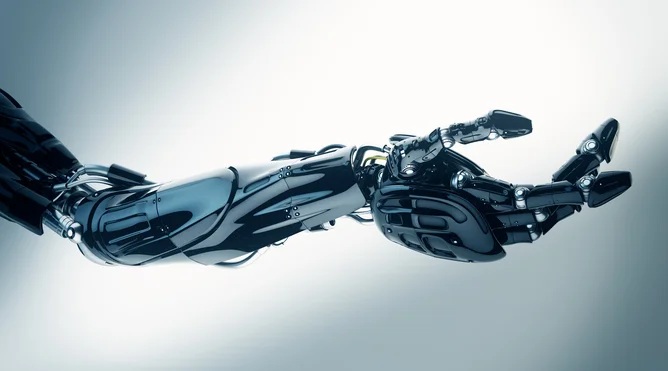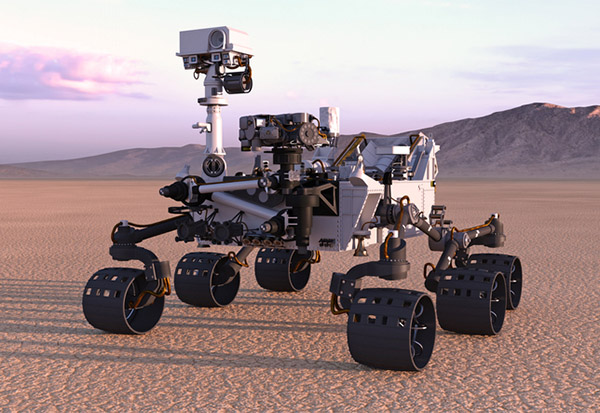Cybernetic Chronicles: Unveiling Bionics
and Robotics
Robotics and bionics are revolutionizing lives by providing innovative solutions to physical limitations and healthcare challenges. Advanced prosthetics equipped with robotic technology allow amputees to regain mobility and perform daily tasks with greater ease and natural movement. Robotic exoskeletons assist individuals with spinal cord injuries in walking again, promoting independence and improving quality of life. In surgery, robotic systems enhance precision, minimize invasiveness, and reduce recovery times, leading to better patient outcomes. Bionics such as cochlear implants restore hearing, while retinal implants offer hope for the visually impaired to regain sight. These technologies not only restore lost functions but also pave the way for new capabilities, such as brain-computer interfaces that enable paralyzed individuals to control devices with their thoughts. Robotics and bionics continue to push the boundaries of what's possible, offering transformative benefits that enhance human potential and contribute to a more inclusive society.
To thoroughly explore how robotics and bionics
are connected, we need to delve into their individual definitions, their
overlapping applications, the technological advancements driving their
integration, ethical considerations, and their impact on various sectors of
society. This comprehensive exploration will provide a detailed understanding
of the intersection between robotics and bionics and how they collaborate to
enhance human capabilities and quality of life.
Robotics and Bionics
Robotics
involves the design, construction, operation, and use of robots, which are
mechanical or virtual artificial agents programmed to perform tasks
autonomously or semi-autonomously. Robotics spans various domains, including
industrial automation, healthcare, space exploration, and service applications.
Understanding Robotics
Key Components of Robotic
Mechanical Systems: The physical structure and components of robots, including joints,
actuators, grippers, and mobility systems (wheels, legs, etc.).
Sensors:
Devices that collect data from the environment or the robot itself, such as
cameras, lidar, proximity sensors, and tactile sensors.
Control Systems: Algorithms and software that interpret sensor data, make
decisions, and control the robot's movements and actions.
Applications: Robotics is applied in various sectors:
Industrial Robotics:
Automating manufacturing processes to improve efficiency, precision, and
safety.
Medical Robotics: Assisting in surgery, rehabilitation, and patient care.
Space Robotics: Exploring and maintaining
spacecraft and planetary surfaces.
Service Robotics: Aiding in tasks such as cleaning, delivery, and companionship.
Understanding Bionics
Key Areas of Bionics
Prosthetics: Artificial limbs and body
parts that replicate or enhance natural functions, using advanced materials,
sensors, and actuators.
Sensory Augmentation:
Devices that restore or enhance sensory functions like vision (bionic eyes) and
hearing (cochlear implants).
Neurotechnology: Interfaces with the nervous
system for applications such as brain-computer interfaces (BCIs) and deep brain
stimulation.
Implantable Devices: Devices
implanted in the body to monitor health (pacemakers, glucose monitors) or
deliver therapies (drug pumps, neural implants).
Intersections of Robotics and Bionics
Robotics in Bionics
Prosthetics
Advanced Prosthetic Limbs: Incorporating robotics to improve functionality and natural movement.
Myoelectric Control: Using sensors to detect muscle signals for intuitive control of
prosthetic devices.
Customization: 3D printing and personalized design for better fit and comfort.
Rehabilitation Robotics
Robotic Exoskeletons: Assisting in rehabilitation by providing support and enabling
mobility for individuals with mobility impairments.
Physical Therapy Robots: Automating repetitive therapeutic exercises to aid in recovery and rehabilitation.
Surgical Robotics
Robotic-Assisted Surgery: Enhancing precision and dexterity in minimally invasive procedures (e.g., da Vinci Surgical System).
Teleoperation: Allowing surgeons to perform surgeries remotely with robotic
assistance.
Bionics in Robotics
Bio-Inspired Robotics
Animal-Inspired Designs: Robots mimicking biological organisms for enhanced agility,
efficiency, and adaptability.
Sensor Technology: Bionic sensors improving robots' perception and interaction with their environment.
Neuro-robotics
Brain-Computer Interfaces (BCIs): Enabling direct communication between the brain and external
devices or robotic limbs.
Neural Interfaces: Integrating robotic systems with the nervous system for enhanced control and feedback.
Technological Advancements Driving
Integration
Materials Science and Engineering
Advanced Materials: Lightweight and durable materials for prosthetics and robotic
components.
Smart Materials: Responsive materials that change properties based on external
stimuli (e.g., shape-memory alloys).
Artificial Intelligence and Machine
Learning
Sensor Fusion: Integrating data from multiple sensors to enhance perception and
decision-making.
Autonomous Navigation: AI algorithms enabling robots to navigate complex environments
autonomously.
Biomechanics and Biomedical Engineering
Biological Modeling: Understanding biological movement and function to improve robotic
design.
Human-Machine Interfaces: Developing intuitive interfaces for seamless interaction between
humans and machines.
Current Applications and Case Studies
Prosthetics and Rehabilitation
Case Study: Ottobock's Myoelectric Prosthetics: Using advanced robotics and bionics to provide natural movement
and functionality for amputees.
Case Study: ReWalk Robotics' Exoskeletons: Assisting individuals with spinal cord injuries to stand, walk,
and regain independence.
Surgical Robotics
Case Study: da Vinci Surgical System: Enhancing surgical precision and minimizing invasiveness in
procedures ranging from cardiac surgery to urology.
Case Study: Robotic-Assisted Orthopedic Surgery: Improving accuracy in joint replacements and orthopedic
procedures.
Neuro-robotics and Brain-Computer
Interfaces
Case Study: BrainGate Neural Interface System: Enabling individuals with paralysis to control robotic arms and
communicate through thought.
Case Study: Elon Musk's Neuralink: Developing BCIs for restoring sensory and motor functions and
enabling direct interfacing with AI systems.
Future Directions and Innovations
Integration of AI and Robotics
Cognitive Robotics: Robots with advanced AI capabilities for learning, adaptation,
and human-like interaction.
AI in Healthcare: AI-driven diagnostics, personalized treatment plans, and
predictive analytics in medical robotics.
Ethical and Regulatory Frameworks
International Collaboration: Establishing global standards for the development and ethical use
of robotics and bionics.
Policy Recommendations: Addressing regulatory gaps and ensuring ethical guidelines are
upheld in research and development.
Conclusion
The future of bionics and robotics holds
immense promise for transformative advancements in healthcare, accessibility,
and human augmentation. Bionics will continue to evolve with personalized
prosthetics and implants that integrate seamlessly with the human body,
offering enhanced sensory perception and motor control. Robotics will advance
with more intelligent and autonomous systems, enabling safer and more precise
surgeries, personalized rehabilitation, and robotic companionship for the
elderly. The convergence of artificial intelligence, materials science, and
biotechnology will drive innovation, creating opportunities for neuro-robotics
and brain-computer interfaces that redefine communication and mobility for
individuals with disabilities. Ethical considerations, such as equitable access
and data privacy, will be pivotal in shaping the responsible development and
integration of these technologies, ensuring they contribute positively to
society's well-being and inclusivity.
Sources: Wikipedia.com, wsj.com, biospectrumindia.com, efficientplantmag.com,
smithsonianmag.com, bbc.com, zdnet.com, .robotics247.com, servicerobots.com, neurorobotics.ece.utah.edu, carandbike.com
Compiled by: Shorya Bisht











No comments:
Post a Comment